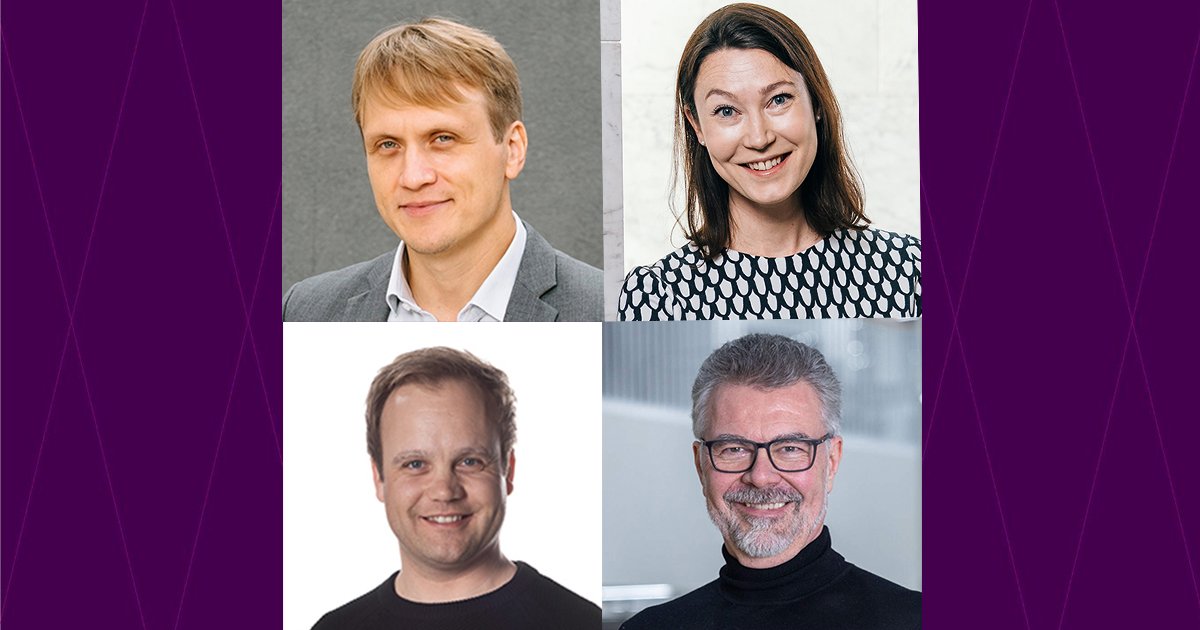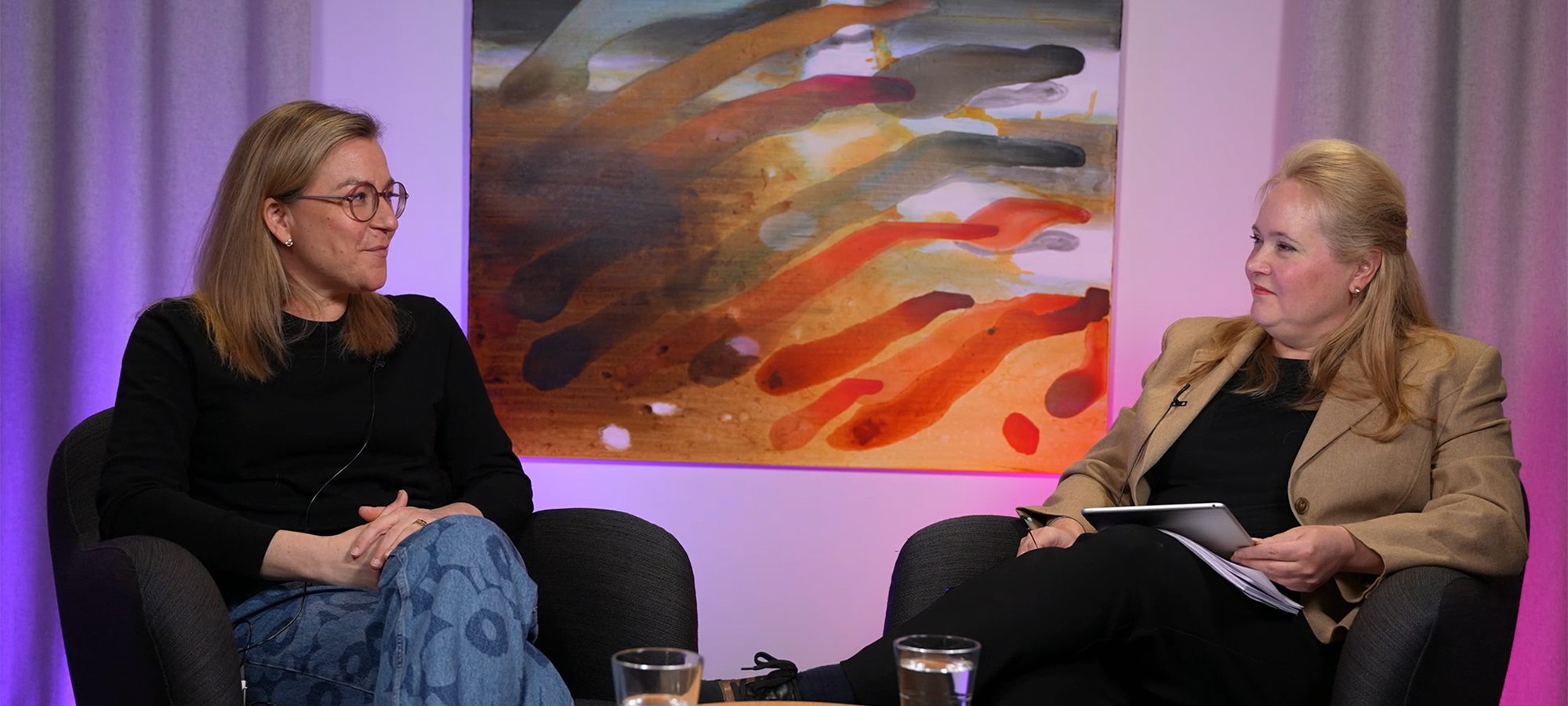The business world is buzzing with something football and other team sports consider an everyday reality: diversity and inclusion. There is no such thing as a successful football team where all team members have the same strengths and skills, temperament and way of playing and dealing with situations on the field. It is a given that a football team consists of different professionals and roles (diversity) – just like it is obvious that a team that does not work together (inclusion) does not succeed, even despite brilliant individual performances.
When football headhunters look for talent, they comb through all countries, language groups, ethnicities and social classes. Even then, some talent will be overlooked. However, everyone knows that a headhunter does not choose only right-back defenders for a team, even if they happen to be one themselves and thus identify their particular skills the best.
The same themes have now made their way into organizations. Diversity: Does the team have diversity? Inclusion: Can we work in a way that enables everyone to shine?
In the 2021 European Football Championship, diversity could be seen and heard both on- and off-field. Volkswagen, one of the competition’s main sponsors, had chosen diversity as its primary message. “We drive diversity” was written on the side of a small car, which transported the football to the field at the start of the game. Advertisements on the outskirts of the field glowed in rainbow colors, and on the campaign videos more than 120 employees of the Volkswagen Group and its brands are celebrating their outing as lesbian, gay, bisexual, trans, non-binary or queer.
Elke Heitmüller is the Head of Diversity Management at Volkswagen. In their press release, she says: “Football is a wonderful way to get the message across that uniformity is detrimental to innovation and doesn’t have good results.” In football, every person is being placed in the optimum position according to their capabilities. “You can learn that from sport.”
Advertisement campaigns have a way of simplifying matters, and life at the workplace does not always resemble a European Football Championship game. For one, there is no cheering audience. This is why we need to take a deeper dive into the world of diversity and inclusion (DI) and ask: why is diversity such a hot topic, and what kind of competitive edge does it really offer? And why are we always told that a culture with diversity, and especially inclusion, are difficult to reach?
Diverse team has work skills needed in the future
Diversity refers to differences between people: gender, race, age, place of residence, temperament, functional capacity, educational background, social class and so on. Inclusivity is about whether different people are equally involved in shared activities. The programs, policies and strategies related to diversity and inclusion at organizations are often referred to as DI or DEI, meaning diversity and inclusion, or diversity, equity and inclusion.

“If a profit-seeking company ignores the power and significance of diversity and inclusion, they might as well leave money on the table”, says Yacine Samb, who works as Google’s Racial Equity Lead for Europe, Middle East and Africa. “Right now I see companies that have realized the importance of DI, and then there are those that don’t yet recognize how DI can increase a company’s problem-solving abilities, knowledge, innovativeness, ability to adjust to market changes and attract new employees.”
If a profit-seeking company ignores the power and significance of diversity and inclusion, they might as well leave money on the table."
The factors listed by Samb are, in fact, at the core of the issue: diverse teams are innovative with a wide range of knowledge and viewpoints. The qualities attached to diverse work communities are also those classified as future work skills: problem-solving, creativity, innovativeness, sensitive leadership, a culture of continuous learning…
In terms of recruitment, it boils down to two things. The potential pool: potential recruits should be screened throughout the population and not be narrowed down to just men, economists, Caucasians or extroverts, for example. Employer branding: especially millennials and generation Z appreciate diversity, and they assess company values when choosing an employer, products and services.
According to Yacine Samb, both are directly tied to a company’s success.
“If an international company doesn’t have knowledge of different areas, cultures and ethnic backgrounds, customers won’t find their services appealing. Diversity leads to an understanding of what types of services and products are needed.”
Google has over 100,000 employees in 170 cities. The company lists publicly the share of women among its employees (32%), along with the share of women in leadership positions (28%).
Statistics on ethnic backgrounds are not compiled or shared everywhere (it is illegal in Finland, for example), but U.S. numbers can be found in Google’s Diversity Report: White 50%, Asian 42%, Latinx 6.4%, Black 4.4%. Google has set public goals to increase the share of underrepresented groups in the company. Recruiters are trained in these goals through inclusive hiring steps and similar programs.
If a company is not successful in DI matters, they cannot attract the best talent."
In practice, increasing diversity can include, for example, changing English proficiency requirements for internships to a “preferred” rather than “required” qualification in places like Brazil to open up more pathways for underrepresented people to apply.
“Even at Google, we compete for the best workers”, Yacine Samb notes. “Especially younger generations have entirely new requirements for transparency and equity. They know how to demand equity and make value-based decisions when seeking a job. If a company is not successful in DI matters, they cannot attract the best talent.”
Cities, schools, TV channels... They all have employees dedicated to DI work
In recent years, large companies have hired DI managers and departments. People in charge of DI matters are also being included in management teams. For example, Nokia named DEI a business priority in 2019, and with the Global Head of Inclusion & Diversity Anneli Karlstedt taking the lead, the company surveyed the salaries of the entire staff to find unfounded pay gaps between men and women (and found them – nearly everyone with a lower salary was a woman).
Cities, schools, TV channels and sports clubs also have employees dedicated to DI work.
Rebecca Piekkari works as Marcus Wallenberg Professor of International Business at Aalto University. She is also the Chair of the Diversity and Equality group at the School of Business. Why are DI issues such a hot topic right now?
There are several forces at play in society preventing diversity, but similarly, also opposing forces that counteract them. Piekkari mentions the shift within society’s value system as an example. This shift requires increased attention towards issues of diversity.
“We are seeing a new kind of value system for the customer and employee experience, investors and our entire society. Companies are judged on how systematically they look after their social responsibility and diversity. The company’s brand as an employer or producer and supplier of services is partly based on this.”
Companies have also started to perceive diversity and inclusion as a competitive edge. Professor Piekkari points out, however, that measuring diversity benefits in money is not altogether simple. A company’s success hangs on such a wide range of factors.
We typically recruit people who are similar to us, which results in less diversity. If we want to increase diversity, we need to work for it and be prepared to step outside our comfort zone."
This, on the other hand, is simple: a diverse staff is a question of equity. The world has become more international, and standard and one-size-fits-all models have been replaced by uniqueness and differences. What else is there to it – surely the current atmosphere and market mechanism already guide management to hire the best, regardless of their background?
Unfortunately, this is not the case. In fact, it is quite the contrary.
Rebecca Piekkari explains why diversity and inclusion do not happen on their own.
“It stems from a human desire to join like-minded individuals. We typically recruit people who are similar to us, which results in less diversity. If we want to increase diversity, we need to work for it and be prepared to step outside our comfort zone.”
Piekkari says that people’s tendency to favor their kind is often unconscious. This is why many get defensive if someone points out that bias or preferences are guiding their actions. “It may be interpreted as blame, but it serves as an important reminder: everyone should be aware of personal biases and the mechanisms influencing their actions.”
She describes a project with the objective of finding out why headhunters’ shortlists did not include women or representatives of minority groups. The results revealed that recruiters’ networks were limited, centering on men from a majority background. This is how power builds up. “When a woman is selected as CEO, she immediately begins to receive board invitations, even though her experience and skillset are exactly the same as the week before the appointment. In other words, a glass ceiling has been broken.”
Recruiters must know how to require diversity in shortlists.
Women and minorities are there if there is a will to find them. This has been recognized in the media’s so-called 50/50 initiatives. When editorial teams have decided to invite an equal number of women and men as experts, sports broadcasts as well as economic discussions have begun to feature women, refuting the previous statement “there aren’t any”. Clear objectives and measuring performance are important tools. The British Broadcasting Company BBC has launched goals to monitor how their staff is shaped in terms of gender, ethnic background and functional capacity. In addition to this so-called 50:20:12 model – referring to the proportion of women, black and minority ethnic, and disabled people in the organization – the company’s focus is on the finer-grained aspects of company culture and accountability. Diversity can, at least in part, be measured in numbers, but these should be accompanied by qualitative inclusion-related goals.
Quantity is often easier to reach than quality. Professor Piekkari has described the challenges of inclusion as follows:
“Inclusion is a lengthy process. It happens when individuals become insiders and are allowed to retain their uniqueness within teams. In other words, inclusion means creating more comfort for more people. Diverse individuals bring unique qualities to the workplace. But in practice, it is often difficult to integrate these diverse individuals precisely because of their uniqueness. Inclusion may require changes in organizational practices, norms and structures, or individuals may have to adjust their professional identity.”*
”Such changes mean that inclusion may be achieved at a cost.”
According to Piekkari, the widespread belief in research is that the benefits of diversity are slim if there is no inclusion involved.
“Different employees working for a company without inclusion will not stay. For example, construction company Skanska noticed that female recruits left after a couple of years because they did not find the culture to be inclusive enough.”
Skanska began to take systematic measures to remedy the situation.
Diversity is vital for Google, as its users do not form a homogeneous group
Diversity is high on Yacine Samb’s agenda, both in her work and civilian life. She was born in West Africa’s Ivory Coast, and she has both Finnish and Senegalese citizenship. “I have found myself an African in Europe and vice versa”, she explains. On social media, she describes herself with the hashtag #voicefordiversity.
Samb says that her approach to the subject of DI is both personal and business-related. Her personal motivation comes from her own experiences with discriminatory behavior and racism. Samb moved to Finland before reaching school age. On the street, she would be yelled, even spat at. The recent Black Lives Matter movement has touched her personally and brought back memories of her traumatic experiences.
Over the past few years, DI themes in the U.S. have focused on the ethnic backgrounds of employees. Google has made a commitment to double the number of Black Googlers in non-leadership roles in the U.S. and double the number of Black directors across EMEA (Europe, Middle East and Africa) by 2023.
In addition to anti-racist activities and thinking, diversity plays a very special role in Samb’s work. Diversity is vital for Google, Samb states. The company has seven consumer products with over a billion users, e.g. Chrome, Gmail and YouTube in addition to the search engine. These users do not form a homogenous group. Samb mentions an example: phone cameras are often optimized for white skin. This defines the “normal” or “usual”, i.e. starting point for how the world is viewed. At the same time, bad or discriminatory products and services are being made for some.
Google announced that it’s working to re-work the algorithms and tweak the training data that power the Pixel camera in order to more accurately capture people of color."
The same phenomenon applies when cars are only tested by men, home appliances are only developed by right-handed people and city services are only designed by wage earners who have a higher education.
What does it mean, then, when Google says it is creating “a more racially inclusive Android camera”?
In spring 2021, Google announced that it’s working to re-work the algorithms and tweak the training data that power the Pixel camera in order to more accurately capture people of color. They said they wanted the camera to better light people with darker skin and more accurately represent skin tone. Also, silhouettes of people with wavy or curly hair will stand out more sharply from the background. According to Wired magazine, Google has set up a diverse inclusion champion group of 2,000+ people who regularly provide feedback throughout each stage of product development. It also created a new training module for new starters in technical roles on inclusive product design.
The camera demonstrates in practice how product designers may assume users to be like themselves. With Google, it also comes down to a question of how a massive corporation wields its power and on whose terms.
Leading diversity requires good implementation - and this has often been defined as inclusion
Consulting firm McKinsey published a report called Why Diversity Matters back in 2015. The report stated that “companies in the top quartile for gender or racial and ethnic diversity are more likely to have financial returns above their national industry medians, and companies in the bottom quartile in these dimensions are statistically less likely to achieve above-average returns”. The result has been quoted actively, even though the report points out that “correlation does not equal causation”.
Since then, the DI discussion has reached new tones and depth. Organizational success is influenced by such a wide group of factors that increasing diversity is no guarantee. In addition to numbers, more attention has been paid to the quality and structures of working. Numerical goals are all well and good and should be monitored, but they are not enough.
Leading diversity requires good implementation, and this has often been defined as inclusion.
Professor Robin J. Ely and Emeritus Professor David A. Thomas from Harvard Business School wrote an article for the Harvard Business Review in December 2020, stating the following:
“Increasing the numbers of traditionally underrepresented people in your workforce does not automatically produce benefits. Taking an ‘add diversity and stir’ approach, while business continues as usual, will not spur leaps in your firm’s effectiveness or financial performance.”
Researchers point out that to fully benefit from increased racial and gender diversity, organizations must adopt a learning orientation and be willing to change the corporate culture and power structure. They summarize their action plan with four points:
Taking an ‘add diversity and stir’ approach, while business continues as usual, will not spur leaps in your firm’s effectiveness or financial performance."
“Four actions are key for leaders: building trust and creating a workplace where people feel free to express themselves; actively combating bias and systems of oppression; embracing a variety of styles and voices inside the organization; and using employees’ identity-related knowledge and experiences to learn how best to accomplish the firm’s core work.”
The article echoes the discussion from recent years highlighting companies’ social significance and responsibility as one of the metrics, and in part, enablers of success. Business leaders must embrace a broader vision of success that encompasses learning, innovation, creativity, flexibility, equity and human dignity, professors Ely and Thomas state on HBR.
It is also worth noting that not all areas of diversity are easily measurable. Studies indicate that in addition to external characteristics, the benefits of diversity have to do with people’s different qualities. For example, the board of directors can improve its quality of work if the group includes different values, attitudes, skills and ways of working. The same mechanism applies to external characteristics: it is bad for business to hire only employees similar to oneself.
All the experts interviewed for this article agree that DI work involves a learning curve, and this too comes with a price: no quick wins, but much to learn. One key success factor is being able to critically examine your actions and identify personal biases and deep-rooted views.
Yacine Samb speaks of a three-step model everyone can use to move from acknowledgement to action*.
- Acknowledge
- Education
- Action
“First, one must acknowledge the point of DI work. Discussions about personal privileges and biases are a must. If you cannot acknowledge your own role and instead externalize or downplay the issue, progress is not possible.”
“Education is hugely important. I collect all kinds of information, all the way from diversity business metrics to studies on stereotypes against Asians, Islamophobia, racism… DI work requires that we understand history and context.”
“Action. Promoting diversity needs to be a part of daily routines: making sure you don’t take part in all-male panels or arrange gaming events that only attract boys, putting effort and resources into only promoting platforms that uphold diversity.”
DI work requires that we understand history and context."
At Google, the work on diversity has been summed up in one sentence: “We are listening, learning and taking action.”
“People need role models and someone to look up to as an inspiration”
Yacine Samb used to do competitive gymnastics. She grew up in a world that hardly had role models who looked like her. “I admired the work of Martti Ahtisaari and Nelson Mandela.”
Now she looks upon the success of Simone Biles, often recognized as the world’s best gymnast, and realizes how important and inspiring it would have been to witness something similar when growing up. Biles was born in the U.S. and also holds Belizean citizenship through her adoptive mother.
“People need role models and someone to look up to as an inspiration”, Samb notes. She recalls being delighted when an acquaintance revealed they had shown her Instagram photos to their daughter. “I love being able to set an example for this daughter, as someone who looks like her.”
At the same time, Barack and Michelle Obama and Kamala Harris are role models in the eyes of countless children and adolescents, demonstrating that people like them belong in the White House as well as elsewhere.
In the field of diversity, the theme of role models is referred to as representation. Shadia Rask, Research Manager at the Finnish Institute for Health and Welfare and Doctor of Philosophy in Public Health, has described representation though her own experience:
“For me, representation means that different people are visible and represented in the media and decision-making, for example. Representation involves relatability and becoming visible. Especially in childhood and youth, we build our identities and follow the example of people who remind us of ourselves. It is hugely damaging if we cannot find anyone to relate to or if we can only find them in narrow and stereotypical roles.” (The Finnish Film Foundation blog, spring 2021)
For me, representation means that different people are visible and represented in the media and decision-making, for example."
In companies, themes of representation are related to recruitment as well as career paths.
Is company X for people like me? Would I be welcomed and appreciated as a colleague? Is it possible for everyone to advance into leadership positions in the company?
Does the management team provide diverse role models and have an understanding of different life situations? Can a CEO take parental leave, be non-binary or use a wheelchair?
Do organizations only see potential in certain types of people? Is the digital transition being carried out on boomer or generation Z’s terms? Are structural barriers, which block certain people’s career paths from the start, identified?
Diversity is not a question of management tolerating, enduring or recognizing minorities – management should also consist of people from minority groups.
Progress is not possible before everyone in the organization understands why diversity is a goal
Yacine Samb says that progress is not possible before everyone in the organization understands why diversity is a goal. As the simple leadership lesson goes: always start with why.
Something that is considered a nice bonus or a fleeting trend will not lead to permanent change. Samb believes that in a business context, the work should be motivated by strategic benefits.
“I consider management to have a crucial responsibility in the change process. Everything starts with the personal path, being ready for self-reflection, doing your homework and educating yourself. There is plenty of information out there”, she points out. According to Samb, diversity should be managed like other business metrics. You need to set objectives and tools for change, and follow-up measures for the objectives.
“This isn’t a performative issue, where you purchase a training in diversity vocabulary and read a few articles.”
The entire organization does not change overnight. According to Samb, management needs to figure out what the most burning house on their property is and start from there. Rebecca Piekkari points out that large international organizations move at a different pace in different parts of the organization.
This isn’t a performative issue, where you purchase a training in diversity vocabulary and read a few articles."
“Multinational corporations have differences between levels, business areas and local organizations. Countries operate in different stages and may highlight various aspects in leading diversity”, Piekkari says. This is why diversity objectives and metrics need to be based on the situation in each part of an organization.
Seeking diversity is not just the responsibility of organizations – they do not operate in a vacuum, but as part of society at large. For example, strict gender roles, educational and social politics, stereotypical attitudes towards different professions and racist biases can prevent diversity. Work against discrimination cannot be limited to the workplace, and companies cannot decide on, say, parental leave legislation in different countries on their own. On the other hand, companies can influence attitudes towards an employee taking paternity leave, and whether coding is a boys-only activity.
Critical consumers know how to demand more than performative pride or BLM campaigns from companies.
The Global Talent Competitiveness Index 2018 (GTCI) report focused on diversity. Alain Dehaze, Chief Executive Officer of The Adecco Group, wrote in the report that today’s world economy stands out for its complexity, uncertainty, and breathtaking pace of technological change. “Keeping abreast of developments requires extraordinary understanding and agility. Both can be enhanced by greater diversity and inclusion.”
The Adecco Group is the world’s second largest Human Resources provider and temporary staffing firm, and a Fortune Global 500 company. They provide the GTCI report with INSEAD and Tata Communications. In the GTCI report, Dehaze describes the change in diversity issues within companies:
“Previously, diversity principally signified compliance — achieving the numbers and demonstrating good corporate citizenship. Then it began to be promoted as a tool to match the different strata of societies in which companies operated to better understand and predict stakeholders’ needs.
Eventually, diversity has come to be understood as an essential enhancer of corporate productivity and performance. Recruiting the best talent is essential. But the evidence shows that diversity can actually trump talent. Cognitively diverse teams regularly outperform their counterparts comprising ‘only’ the highly gifted by significant margins. While the former may have the edge in routine tasks and ‘business-as-usual’ situations, examples show diverse groups’ superiority when it comes to complex problem solving and innovation in conditions of ambiguity.”
Key words here are, and they are worth repeating: Cognitively diverse teams outperform their counterparts comprising ‘only’ the highly gifted by significant margins.
In practice, this means that new innovations, for example, often require cognitive diversity and different ways of approaching the world. Professor Rebecca Piekkari says that similar educational backgrounds tend to have a homogenous, standardizing effect. In other words, it is not enough to have only Finnish and Indian male engineers working for a company.
The GTCI report describes Tata Communications’ own Winning Mix program, which seeks to increase the share of women in the company. In 2014, Tata had a workforce of only 17% women across all core business units. The company embarked on a new program to improve its position, with a target of 30%/70% female/male employees. This is the generally accepted tipping point at which gender rebalancing can take on its own positive momentum.
Although each organization must carry out DI work from their own premises, the model used by Tata Communications has practical applications drawing from many general principles on increasing diversity. These include numerical goals and their follow-up measures, the removal of unconscious biases, making strategic benefits of diversity visible, recruiting people from minority groups and supporting their career development, increasing understanding of minority representatives’ experiences, education and increasing knowledge throughout the organization. In practice, the work at Tata Communications can look like this: when someone hands in their notice, an external party conducts thorough exit interviews and tries to determine if there are aspects about the culture causing women, in particular, to leave the company.
A job with a purpose
In fall 2019, Yacine Samb was finalizing her EMBA degree at Aalto University Executive Education’s program. In an interview for Aalto Leaders’ Insight, she described the EMBA as a personal project of growth, an investment in herself and her future. According to Samb, the program provided tools for reflecting on whether she was on the journey she wanted to be on. What is my own purpose in work and life in general, she would ask.
When completing the program, Samb was working as Google’s Product Marketing Manager for Northern Europe. In summer 2021, she was appointed as Google’s Racial Equity Lead for Europe, Middle East and Africa.
If the new job has something, it’s purpose. It comes with great responsibility and content that is very personal.
“I see this as a journey towards the bigger picture that worries me about the world. In the same way as I previously spoke about the digital transformation, I now speak about themes of diversity and consider who needs the most support for feeling included in the workplace.”
Samb says she loves waking up to a job with a purpose.
News of police violence, xenophobia and unequal consequences of the coronavirus move her and bring up emotions. But the question for her is: Can I help to solve this problem? How?
Samb describes her feelings towards her current job with both humility and passion: “I’m uncomfortably excited.”
Did you enjoy this long form? If your answer is yes, you can find more long forms here. You can also sign up for our Aalto Leaders' Insight Highlights newsletter to enjoy the fresh stories as well as invitations to free webinars. See more information below.
Aalto University Perspective: Research on DI
Research on diversity and inclusion is truly multidisciplinary. At Aalto University, many research groups study diversity and inclusion. To name just a few:
•
At the School of Business, we explore social exclusion of more mature entrepreneurs and language diversity in multinational corporations.
•
At the School of Arts, Design and Architecture, our colleagues problematize the traditional gender categories of women and men in fashion studies. They also work at the crossroads of disability studies and contemporary art
education to advance social justice.
•
In the fields of science and technology, researchers are worried that people don’t get exposed to diverse viewpoints because social media becomes so quickly very polarized and selective. These researchers also study how interpersonal understanding can be enhanced by synchronizing brain activity between people.
Source: Rebecca Piekkari, Aalto University
What is D & what is I
differences between individuals
Diversity refers to differences between individuals, such as demographic (e.g. gender, age, ethnic background, sexual orientation, nationality), experiential (e.g. family situation, phase of life, work experience) and cognitive (factors that stem from e.g. education) differences.
no one is left outside
Inclusion means that people can feel respected and welcome as members of an organization, team or community. It also means that no one is left outside because of e.g. opinion, skin color, gender or native language. By fostering and
advancing inclusion and diversity, organizations can find new perspectives on their work and decision-making, which in turn has a positive effect on the organization and its operations.
source: Aalto University





















